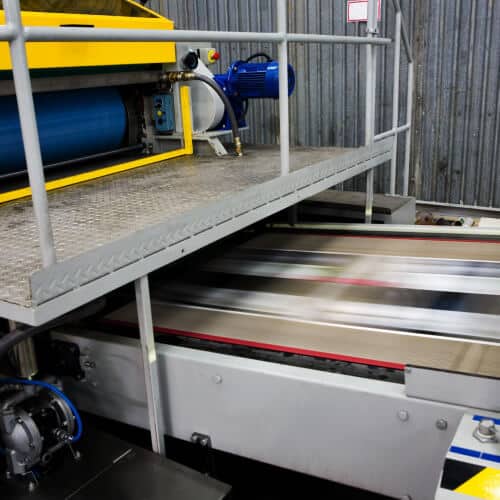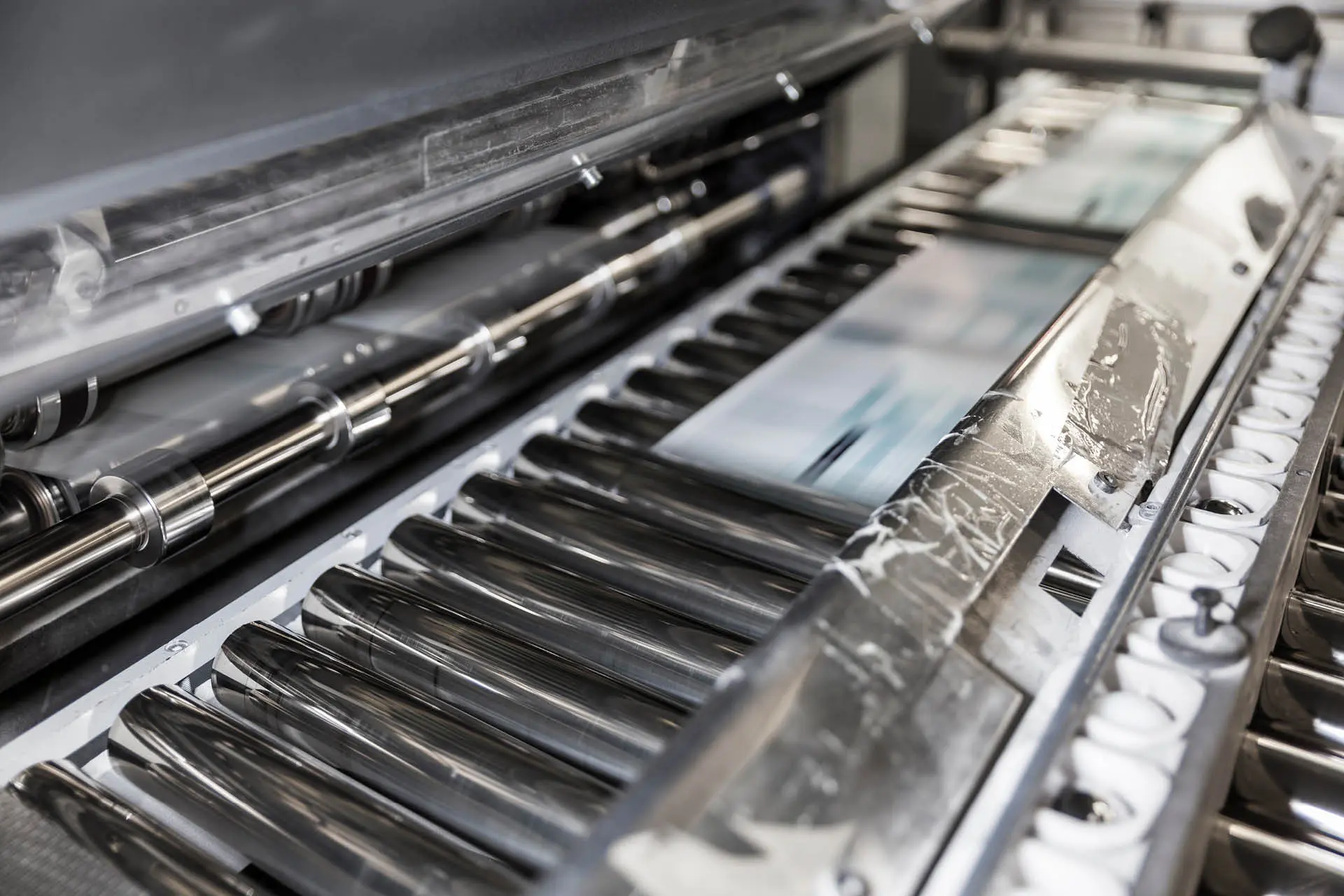The Important Guide to Understanding Litho Printing and Its Applications
Litho printing stands as a significant approach in the printing market, rooted in the principles of oil and water repulsion. This technique not just provides top notch pictures yet likewise provides to different commercial demands. Its applications range from marketing products to packaging, showcasing its flexibility. As the market adapts to new modern technologies, the evolution of litho printing elevates inquiries regarding its future and importance in a digital landscape. What exists in advance for this withstanding technique?

What Is Litho Printing?
Litho printing, an extensively used printing technique, relies upon the principle of oil and water repulsion. This method utilizes a flat printing surface, commonly a steel plate, which is treated to guarantee that the image locations are responsive to oil-based inks while the non-image locations repel them. The process starts with the production of an image on the plate, frequently via illustration or photographic ways. Once the picture is prepared, the plate is wetted with water, followed by the application of ink. The ink sticks only to the image locations, enabling exact recreation of graphics and text. Litho printing is favored for its ability to create top notch prints with fine information and vibrant shades. It is frequently used in commercial applications, consisting of papers, magazines, and product packaging, showcasing its versatility and effectiveness in fulfilling the demands of contemporary printing.
The Background of Lithography
Although lithography is a modern-day printing staple, its origins trace back to the late 18th century when German playwright Alois Senefelder designed the method in 1796. Initially established as a technique for reproducing texts and images, lithography made use of a flat rock surface area to produce prints through a chemical process. Senefelder's advancement enabled greater adaptability and creative expression contrasted to previous printing methods.By the 19th century, lithography acquired widespread acceptance, becoming a popular option among musicians and publishers. It allowed the automation of illustrations, maps, and posters, notably impacting the printing sector. The strategy further evolved with the intro of lithographic presses, enhancing efficiency and quality.As the commercial change advanced, lithography adjusted to meet the demands of business printing, leading the way for modern applications. Today, it stays a crucial strategy in various sectors, consisting of posting, product packaging, and great art reproduction.
Exactly How Litho Printing Works
An essential function of litho printing is its dependence on the concept of oil and water repulsion - litho printing. In this procedure, images are transferred from a level surface, usually a steel or polymer plate, to paper. Home plate is treated to ensure that the locations intended for printing draw in ink, while the non-image areas repel it due to their affinity for water. The printing begins by dampening the plate with water, which follows the non-image areas. Subsequently, an oil-based ink is applied, sticking only to the desired picture areas.When the plate enters call with the substratum, the ink is moved, developing a print. The litho printing process is qualified of creating top notch pictures with fine detail. It is commonly utilized for automation because of its performance and uniformity, making it a favored approach for commercial printing applications
Advantages of Litho Printing
One remarkable benefit of litho printing is its capability to produce high-quality photos regularly, making it a suitable selection for industrial jobs. This printing method makes use of a flat printing plate, making certain even ink circulation and sharp details. Litho printing is also renowned for its shade precision, enabling lively and true-to-life recreations, which is necessary for branding materials.Moreover, it sustains a wide array of substratums, including paper, cardboard, and even particular plastics, boosting its versatility. The process is cost-effective for large runs, as economic situations of range reduce per-unit expenses. Furthermore, litho printing has a fast turn-around time, enabling for efficient production schedules.Its toughness also suggests that published materials resist fading, ensuring that the final product preserves its visual allure gradually. Generally, these advantages make litho printing a preferred choice throughout various industries, adding to its enduring popularity.
Applications of Litho Printing in Company
As services significantly seek trustworthy and high-quality printing remedies, litho printing arises as a principal in numerous applications. This strategy is especially favored for generating advertising products such as sales brochures, leaflets, and catalogs, thanks to its capability to supply dynamic shades and sharp images. On top of that, litho printing is often utilized for packaging solutions, allowing firms to create captivating labels and boxes that enhance product appeal.In the sector of corporate identity, litho printing is important in generating specialist stationery, service cards, and marketing goods, which aid strengthen brand recognition. Additionally, it is extensively made use of in the publishing industry for published products such as books and publications, where consistent quality is vital. In general, litho printing's versatility and performance make it an important tool for businesses aiming to connect efficiently and establish a solid market existence.
Artistic Use Litho Printing
Litho printing functions as a flexible tool in the domain name of printmaking, offering artists a distinct approach to express their creative thinking. This method allows for a vast array of artistic applications, from conventional prints to modern analyses. By discovering the subtleties of litho printing, musicians can harness its distinct high qualities to improve their job.

Printmaking Techniques Summary
The creativity of printmaking incorporates a diverse array of strategies, with litho printing attracting attention for its distinct approach to image creation. This method counts on the principle of oil and water repulsion, enabling musicians to attract straight onto a limestone or steel plate with an oily medium. When prepared, the plate is moistened and inked, transferring the picture onto paper via stress. Litho printing is commemorated for its ability to create great details and rich tonal variants, making it a favored selection among artists. In addition, the process is flexible, fitting both conventional techniques and modern adaptations. This versatility enables litho printing to bridge various creative styles, enriching the printmaking landscape with its distinctive features and click to read capabilities.
Distinct Artistic Applications
Discovering the special imaginative applications of litho printing exposes its exceptional versatility in different creative areas. Artists use litho printing to produce complex designs and structures, permitting expressive and detailed works. The process facilitates the reproduction of brilliant colors, making it excellent for pictures and great art prints. Many contemporary artists welcome lithography for its ability to combine traditional techniques with modern concepts, resulting in ingenious art work. Furthermore, litho printing is commonly used in the manufacturing of minimal edition prints, enhancing their worth and allure. The tactile quality of litho prints adds an unique dimension, attracting enthusiasts and art fanatics alike. Overall, litho printing continues to be a significant medium for imaginative expression, bridging classic approaches with contemporary creativity.
The Future of Litho Printing in a Digital World
As the printing market develops, litho printing deals with the obstacle of integrating digital technologies to stay relevant. Strategies focused on digital integration, along with fads in sustainability and advancement, will shape its future - litho printing. Recognizing these dynamics is essential for industry stakeholders seeking to adapt to a swiftly changing landscape
Digital Integration Approaches
An expanding number of litho printing firms are accepting digital assimilation approaches to remain affordable in a significantly digital landscape. By incorporating electronic process, these companies can simplify processes and improve effectiveness. This combination permits for real-time data monitoring and enhanced communication between divisions, decreasing turn-around times significantly. In addition, electronic devices enable much better customization and customization of published materials, accommodating details consumer needs. Firms are likewise embracing hybrid printing solutions that integrate traditional litho methods with digital modern technologies, supplying versatility in production. Leveraging information analytics helps in comprehending market fads and customer preferences, permitting services to make informed choices. Overall, digital combination is ending up being necessary for litho printing business intending to introduce and respond to evolving market demands.
Sustainability and Advancement Trends

Often Asked Concerns
What Materials Are Commonly Used in Litho Printing?
The products frequently utilized in litho printing consist of aluminum plates, ink, water, and paper. Each element plays an important duty in the printing process, guaranteeing top quality image reproduction and effective transfer of ink onto the substratum.
Exactly How Does Litho Printing Contrast to Digital Printing?
Litho printing offers remarkable shade uniformity and quality for big runs, while digital printing excels in short runs and customization. Each method has distinctive advantages, satisfying various requirements based upon production scale and cost-efficiency.
What Is the Regular Turn-around Time for Litho Printing Projects?
The normal turnaround time for litho printing jobs varies, typically varying from a couple of days to a number of weeks. Variables affecting this duration include job intricacy, amount, and needed completing processes, affecting total production schedules.
Can Litho Printing Accommodate Custom Sizes and Formats?
Litho navigate to this site printing can without a doubt fit customized sizes and layouts, enabling versatility in layout. This versatility allows customers to accomplish unique print outcomes customized to their particular requirements, improving the overall efficiency of their tasks.
What Are the Environmental Influences of Litho Printing?
The ecological impacts of litho printing consist of resource intake, chemical usage, and waste generation. Nevertheless, advancements in sustainable methods and environmentally friendly products are progressively lowering these adverse results, advertising a much more ecologically responsible approach to printing.